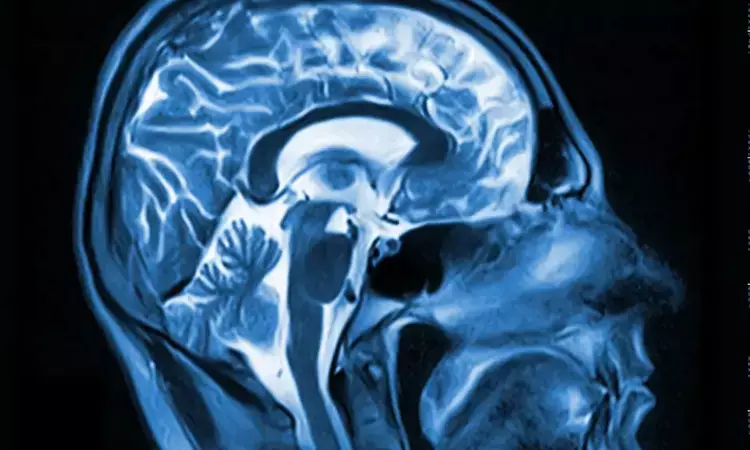- Home
- Medical news & Guidelines
- Anesthesiology
- Cardiology and CTVS
- Critical Care
- Dentistry
- Dermatology
- Diabetes and Endocrinology
- ENT
- Gastroenterology
- Medicine
- Nephrology
- Neurology
- Obstretics-Gynaecology
- Oncology
- Ophthalmology
- Orthopaedics
- Pediatrics-Neonatology
- Psychiatry
- Pulmonology
- Radiology
- Surgery
- Urology
- Laboratory Medicine
- Diet
- Nursing
- Paramedical
- Physiotherapy
- Health news
- Fact Check
- Bone Health Fact Check
- Brain Health Fact Check
- Cancer Related Fact Check
- Child Care Fact Check
- Dental and oral health fact check
- Diabetes and metabolic health fact check
- Diet and Nutrition Fact Check
- Eye and ENT Care Fact Check
- Fitness fact check
- Gut health fact check
- Heart health fact check
- Kidney health fact check
- Medical education fact check
- Men's health fact check
- Respiratory fact check
- Skin and hair care fact check
- Vaccine and Immunization fact check
- Women's health fact check
- AYUSH
- State News
- Andaman and Nicobar Islands
- Andhra Pradesh
- Arunachal Pradesh
- Assam
- Bihar
- Chandigarh
- Chattisgarh
- Dadra and Nagar Haveli
- Daman and Diu
- Delhi
- Goa
- Gujarat
- Haryana
- Himachal Pradesh
- Jammu & Kashmir
- Jharkhand
- Karnataka
- Kerala
- Ladakh
- Lakshadweep
- Madhya Pradesh
- Maharashtra
- Manipur
- Meghalaya
- Mizoram
- Nagaland
- Odisha
- Puducherry
- Punjab
- Rajasthan
- Sikkim
- Tamil Nadu
- Telangana
- Tripura
- Uttar Pradesh
- Uttrakhand
- West Bengal
- Medical Education
- Industry
Gadopiclenol can be used at half the gadolinium dose for contrast-enhanced MRI of the CNS: PICTURE trial

Hungary: A recent study published in Investigative Radiology has demonstrated the safety and efficacy of gadopiclenol for contrast-enhanced MRI (magnetic resonance imaging) of the CNS (central nervous system).
The PICTURE randomized clinical trial showed gadopiclenol at 0.05 mmol/kg to be non-inferior to gadobutrol at 0.1 mmol/kg for an MRI of the central nervous system, confirming that gadopiclenol can be used at half the gadolinium dose used for other gadolinium-based contrast agents (GBCAs) to achieve similar clinical efficacy.
There is a need for developing new high-relaxivity gadolinium-based contrast agents for MRI allowing dose reduction while maintaining similar diagnostic efficacy, particularly in the context of gadolinium retention in tissues. Therefore, Laurie A Loevner, University of Pennsylvania, Philadelphia, PA, and colleagues aimed to demonstrate that contrast-enhanced MRI of the CNS with gadopiclenol at 0.05 mmol/kg is not inferior to gadobutrol at 0.1 mmol/kg, and superior to unenhanced MRI.
PICTURE, an international, double-blinded, randomized, cross-over, controlled, phase III study, was conducted between 2019 and 2020. The study included 256 adult patients with CNS lesions. They were randomized to undergo 2 MRIs (interval, 2-14 days) with gadopiclenol (0.05 mmol/kg) and then gadobutrol (0.1 mmol/kg) or vice versa.
The primary criterion was lesion visualization based on three parameters (contrast enhancement, internal morphology, and border delineation) evaluated by 3 off-site blinded readers. Key secondary outcomes were enhancement percentage, lesion-to-background ratio, overall diagnostic preference, contrast-to-noise ratio, and adverse events.
The study revealed the following findings:
- Of the 256 randomized patients, 250 received at least 1 GBCA administration (mean age, 57.2 years; 53.6% women).
- The statistical noninferiority of gadopiclenol (0.05 mmol/kg) to gadobutrol (0.1 mmol/kg) was achieved for all parameters and all readers (n = 236), as well as its statistical superiority over unenhanced images (n = 239).
- Enhancement percentage and lesion-to-background ratio were higher with gadopiclenol for all readers, and contrast-to-noise ratio was higher for 2 readers.
- Three blinded readers preferred images with gadopiclenol for 44.8%, 54.4%, and 57.3% of evaluations, reported no preference for 40.7%, 21.6%, and 23.2%, and preferred images with gadobutrol for 14.5%, 24.1%, and 19.5%.
- Adverse events reported after MRI were similar for gadopiclenol (14.6% of patients) and gadobutrol (17.6%).
- Adverse events considered related to gadopiclenol (4.9%) and gadobutrol (6.9%) were mainly injection site reactions, and none were serious.
"PICTURE study showed that gadopiclenol at 0.05 mmol/kg, which is half the dose of gadolinium injected as compared with other approved gadolinium-based contrast agents, was as good as gadobutrol at 0.1 mmol/kg, and superior to unenhanced MRI concerning CNS lesion visualization," the researchers wrote.
"Furthermore, images with gadopiclenol were majority preferred, in correlation with the higher values for lesion quantitative parameters seen with gadopiclenol. Gadopiclenol showed a good safety profile," they concluded.
Reference:
Loevner, Laurie A. MD∗; Kolumban, Balint MD†; Hutóczki, Gábor MD‡; Dziadziuszko, Katarzyna MD§,∥; Bereczki, Daniel MD, PhD¶; Bago, Attila MD#; Pichiecchio, Anna MD∗∗,††. Efficacy and Safety of Gadopiclenol for Contrast-Enhanced MRI of the Central Nervous System: The PICTURE Randomized Clinical Trial. Investigative Radiology 58(5):p 307-313, May 2023. | DOI: 10.1097/RLI.0000000000000944
Dr Kamal Kant Kohli-MBBS, DTCD- a chest specialist with more than 30 years of practice and a flair for writing clinical articles, Dr Kamal Kant Kohli joined Medical Dialogues as a Chief Editor of Medical News. Besides writing articles, as an editor, he proofreads and verifies all the medical content published on Medical Dialogues including those coming from journals, studies,medical conferences,guidelines etc. Email: drkohli@medicaldialogues.in. Contact no. 011-43720751


